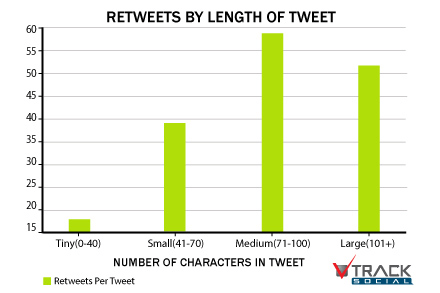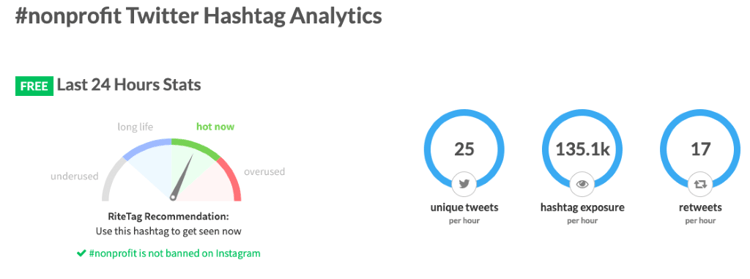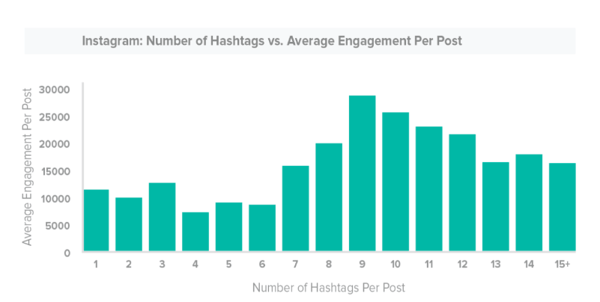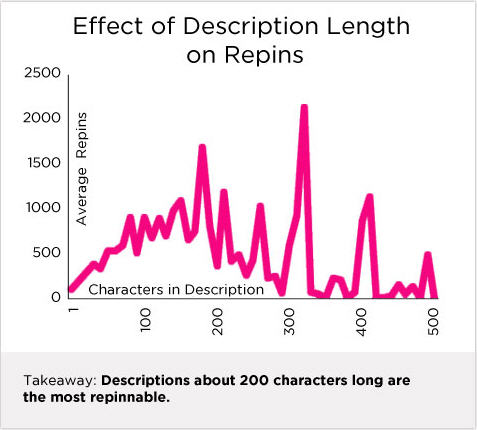Social media can be a powerful platform for communicating and connecting with your donors. With COVID-19 stay at home and social distancing measures, it’s no surprise that social media usage is up. With this, comes a unique opportunity for nonprofits like yours to utilize social platforms to connect and communicate with your respective donors.
Social media is unique in that it is the only platform that allows you to directly engage with your supporters one to one. By posting content across your accounts, you are opening up the opportunity for supporters to make comments, ask questions and participate in discussions that make supporters feel heard. This opportunity for direct engagement and dialogue can help build lasting relationships that strengthen your existing donor base. Social media also offers the opportunity for organizations to extend their reach and acquire more supporters.
Whether you use social media for organic or paid purposes, your social media copy plays a vital role in how your audience views your organization. If you want to increase your awareness and avoid potential donors scrolling past your feed, we recommend you keep these data-driven parameters in mind when you are generating your social media copy. They are meant to serve as helpful frameworks, since we firmly believe that when it comes to online fundraising, there is no one-size-fits-all approach. We recommend you test these character lengths for your own organization to validate results; after all, there is no better data than your own!
Read the full post below. And YES, we realize there’s A LOT of detailed information here, so to make things a bit more digestible, we’ve distilled the key information into a downloadable infographic, your quick-reference and printable guide to crafting solid social media content. We hope you find it useful as you embark on your social media strategy for the upcoming holiday giving season (and beyond)!
 Facebook
Facebook
Optimal Facebook Paid Post Length - Headline: 5 words
Optimal Facebook Paid Post Length - Main Text: 19 words
Optimal Facebook Paid Post Length - Link Description: 13 words
In an analysis of over 752,000 Facebook ads, AdEspresso found that “a clear, no-nonsense (and five-word) headline, paired with 20 words of ad text is the recipe for a perfect sponsored post.”
As a nonprofit, your headline is a major component in grabbing attention and getting users to interact with your organization. Have a campaign with a matching gift fund? Lead with that and include some powerful calls to action.
When it comes to images, Facebook actually has a limitation on how much text you can have in your ad image. No more than 20% of your ad image can be made up of text. Luckily, Facebook does provide a tool to help you identify the perfect image-to -text ratio and increase the likelihood of it getting fully approved. Check your image text with Facebook here >>
Optimal Facebook Video Length: 1 minute or less
For nonprofits, video storytelling is an important way for supporters to connect with your cause.
A study from HubSpot found that engagement was the strongest on videos that were roughly 1 minute long. Additionally, they found that “users like watching snappy videos that they can quickly like or share before scrolling down to the next piece of content.”
 Twitter
Twitter
Optimal Best Practice for Organic & Promoted Tweet Length: 71-100 characters
Any content that your organization is sharing should add value. It should be relevant to your mission and to your audience. This holds especially true for Twitter, since it’s a much lower stake platform than other platforms.
Twitter actually doubled its character limit back in 2017 from 140 characters to 280 in order to help make writing on the platform easier for users. However, research shows us that when it comes to tweeting, you want to strive for quality over quantity.
Twitter’s own best practice guide references a study done by Buddy Media, which determined that tweets that contain less than 100 characters receive, on average, 17% higher engagement than longer tweets.

Best Practice for Twitter Hashtags: 6 characters
You may not have thought there was a best practice to the character limits of hashtags, but even Twitter experts recommend keeping each hashtag keyword under 6 characters. The reason? Hashtags don’t support spaces, so by having fewer characters, it allows the reader to quickly comprehend what they’re reading.
For nonprofits, hashtags are a great way for supporters to connect with your brand and strengthen donor relationships. Hashtags can be associated with your overall brand mission, or they can be more campaign focused. And if done correctly, hashtags can significantly boost engagement across all your social media platforms. When generating hashtags, we recommend conducting research to see which relevant hashtags are currently trending in popularity and which are not. With knowledge of the hashtag landscape, you’ll have the tools you need to inform your overall hashtag strategy so you can stand out from the noise instead of getting lost in it.
Check your hashtags here >> and you can see the breakdown of tweets, exposure and retweets. Here’s an example of #nonprofit.

 Instagram
Instagram
Optimal Instagram Caption Length: 138-150 characters
Instagram allows you to have captions up to 2,200 characters long. Despite the length allowed, you shouldn’t need that many characters to share your intended content and purpose.
On a visual platform like Instagram, strong imagery will always be the element that stops users in their tracks; however, the captions are what can propel engagement and get the user to complete your desired action. If you want to maximize engagement and response on your Instagram posts, it's recommended to stick to 138-150 characters in your captions. The reason? Users come to Instagram for the imagery and have a habit of quickly scrolling through their feed, so by having your caption on the shorter side, it will allow your message to be conveyed that much faster.
Optimal Instagram Sponsored Post Length: 125 characters or less
Optimal Instagram Hashtag Length: 7-10 per post, less than 24 characters each*
*If using the same hashtag across channels such as Instagram and Twitter, the best practice is to keep the hashtag short and simple: around 10-15 characters if possible. But this depends greatly on how many characters your message takes up.
Instagram allows you to have up to 30 hashtags per post. As tempting (and addicting) as it may be to keep adding those hashtags on, it's recommended to only have around 7-10 per post. The reason? Using more hashtags won’t necessarily yield higher visibility. TrackMaven research shows that posts with 9 hashtags receive the most engagement. #QualityoverQuantity

 YouTube
YouTube
YouTube is an often-underutilized channel, but it functions similarly to your other social channels. By posting engaging content for your supporters and linking to your website and/or donation pages, you can turn that engagement into action.
Optimal YouTube Video Length: 3 minutes
A study by ReelSEO found that the average video length for the top 50 most shared global video ads was 2 minutes and 54 seconds.
YouTube is actually a search engine, and it’s the 2nd largest search engine behind Google. The platform relies heavily on its text-based content in order to organize its videos to its servers. The entire site is even driven by a search bar — just like Google’s homepage. So even on a video-based platform, the content you generate can become a very useful SEO tool, as it allows you to leverage your video keywords just like you would for Google search terms.
Optimal YouTube Videos Title Length: 70 characters
For YouTube, the title of your video is an extremely important factor. Your title keywords are what trigger the rankings for the Google and YouTube algorithms. And although YouTube has a 100-character limit for titles, anything longer than 70 will likely be truncated in most search results.
Optimal YouTube Video Description Length: 157 characters
YouTube gives you 5,000 characters to play with in the description field. As a best practice, you actually want to keep your description brief and under 157 characters, as that is the limit that will appear in a search snippet.
The exception to this is if you’re using YouTube transcripts, which are the textual representations of spoken content in your video files. Transcripts can be used to create captions and only contain the audio within the YouTube video. If using YouTube transcripts, it’s okay to use the full 5,000-character allotment; you're pulling in an actual transcript of your video, so keywords will be relevant and effortlessly ranked within the YouTube algorithm.
 LinkedIn
LinkedIn
Optimal LinkedIn Organic & Paid Update Length: 25 words
Similar to Facebook, LinkedIn offers a “see more” button, where the text will cut off after the 140-character mark. So as a general best practice guide, it’s best to stick to around 25 words.
Optimal LinkedIn Title Length: 40-90 characters
In an analysis of more than 3,000 of the most successful posts on LinkedIn’s publishing platform, it was found that LinkedIn posts that have titles between 40-90 characters in length received the greatest number of post views.
Optimal LinkedIn Video Length: 30 seconds
Did you know? LinkedIn offers the ability to have videos up to 10 minutes long. However, as we continue to see, just because the limit is there, doesn’t mean you should utilize all that time. According to LinkedIn’s own best practices, videos under 30 seconds perform best: “Keep videos under 30 seconds for brand awareness and brand consideration goals. A study by LinkedIn* found that videos under 30 seconds reported a 200% lift in view completion rates (Source: LinkedIn internal study, 2018).”
 Pinterest
Pinterest
If imagery and videos are a big part in telling your nonprofit’s story, then Pinterest can be a great channel to share them. Have an infographic that demonstrates real impact? Cause-relevant data in a visual format can be a great way to capture new supporters.
Best Practice for Pinterest Images: 735x1102 pixels
Pinterest’s best practice guide states that images on the platform should have a minimum width of 600 pixels and a 2:3 aspect ratio.
Best Practice for Pinterest Descriptions: 200 characters
Pinterest is another visually driven platform; however, the description remains important because it’s the compelling piece of content that can elicit an action. Pinterest allows up to 500 characters for descriptions; however, the first 50-60 characters are what’s likely to show in feeds, so it’s important to put your best content up front so you can grab attention instantly.

The Bottom Line
Social media platforms like Facebook, Instagram and Twitter can provide boundless opportunities for you to connect with your constituents, raise valuable awareness for your mission and ultimately drive conversions to help you achieve your fundraising goals.
When it comes to producing engaging social media ads, the data shows us that less is often more. Even so, the best data to follow is always your own. You will never know what works for your organization unless you test into it. So, consider these guidelines as suggestions and then test, learn and re-test!
Looking for more guidance on social media and digital marketing best practices? Contact us today. We'd love to hear from you!





